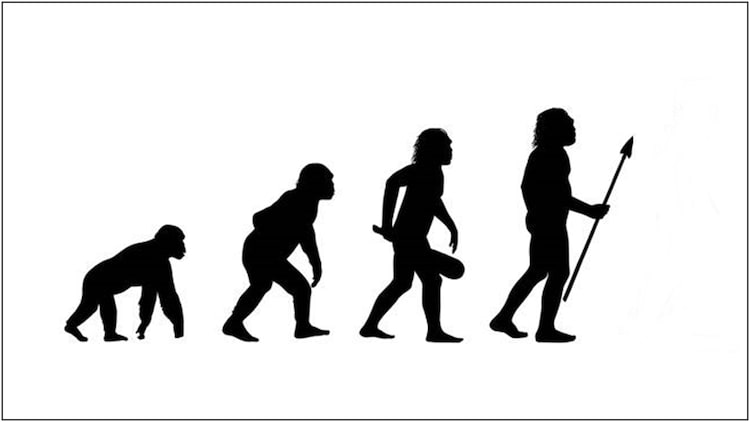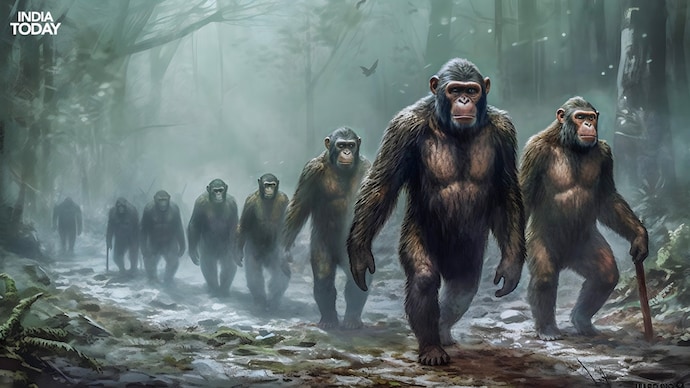
Where did modern humans come from? New study adds twist to theory of our evolution
A new study has now introduced a new twist in the tale of evolution as scientists propose that modern humans descended from two populations.

In Short
- Study taps into genome data from modern-day African populations
- The findings did not support a longstanding hypothesis
- Multiple groups from across Africa contributed to emergence of Homo sapiens
Where did modern humans come from? The question is key to the study of evolution and it was believed that we all had our humble origins from a single group of ancestors that came out of Africa, until now.
A new study has now introduced a new twist in the tale of evolution as scientists propose that modern humans descended from two populations that lived in Africa for a million years individually before merging across the continent, indicating that there is no single birthplace of humanity.
It taps into genome data from modern-day African populations, offering insight into how this may have unfolded.
Also Read | Mega genomic project reveals how humans and animals are closely attached
The study published in the journal Nature states that despite broad agreement that Homo sapiens originated in Africa, considerable uncertainty surrounds specific models of divergence and migration across the continent.
"Decades of study of human genome variation have suggested a predominantly tree-like model of recent population divergence from a single ancestral population in Africa. It has been difficult to reconcile this finding with the fossil and archaeological records of human occupation across the vast African continent," researchers said in the paper.
The global team of researchers from different institutions analysed the genomes of 290 living people and conducted large-scale simulations of human history feeding multiple scenarios of different populations existing in Africa to the software which could produce the diversity of DNA found in people living today.
Also Read | Oldest-known bat skeletons shed light on evolution of flying mammals
The research indicated that multiple ancestral groups from across Africa contributed to the emergence of Homo sapiens in a patchwork manner, migrating from one region to another and mixing with one another over hundreds of thousands of years.
The team analysed DNA from different groups arising in Africa from Mende, farmers living in Sierra Leone in West Africa to the Gumuz, a group descended from hunter-gatherers in Ethiopia; the Amhara, a group of Ethiopian farmers; and the Nama, a group of hunter-gatherers in South Africa, the New York Times reported.
It has long been held that modern humans sprang across the world from Africa as the oldest fossil was unearthed on the continent. The fossil was 3,00,000 years old and archeologists have also found the oldest stone tools from the region as well, hinting at some sort of human settlement.
The team compared the DNA of African people in the study with that of a person from Britain and the genome of a 50,000-year-old Neanderthal found in Croatia, another close relative of ancient humans. They concluded that the ancestors of our species existed in two different population groups dubbed Stem1 and Stem2 by the team led by Dr. Brenna Henn, a geneticist at the University of California, Davis.
Also Read | Inbreeding, not humans, may have led to Neanderthal extinction: Study
It also found that everyone alive today can trace their ancestry to at least two distinct populations that were present in Africa dating back about a million years.
"All humans share a relatively recent common ancestry, but the story in the deeper past is more complicated than our species evolving in just a single location or in isolation," said University of Wisconsin-Madison population geneticist Aaron Ragsdale, lead author of the study.
The ancestral groups were likely spread across a geographic landscape in a population structure that, Ragsdale said, "was 'weak,' meaning that there was ongoing or at least recurrent migration between groups, and this maintained genetic similarity across ancestral populations."
The fossil record is scanty in the time period that would be most informative about the emergence and spread of Homo sapiens, and there is no ancient DNA from skeletal or dental remains from these time periods, the researchers said.
Also Read | Earth-like planet covered with erupting volcanoes discovered

